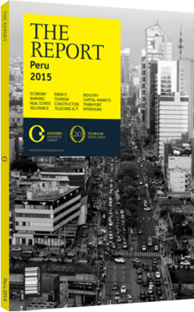Pablo Berckholtz, Managing Partner, Estudio Echecopar, a member firm of Baker & McKenzie International: Interview

Interview: Pablo Berckholtz
What regulatory changes are needed to maximise the success of public-private partnerships?
PABLO BERCKHOLTZ: We need to provide investors with some kind of assurance that, once awarded, projects will work smoothly and efficiently. The fact that we have moved up in the global rankings of investor confidence has been helpful for attracting foreign direct investment (FDI), but a lot still needs to be done in order to close the country’s $90bn infrastructure gap. Regulatory changes should focus on accompanying processes through to the execution phase so that expectations can be met for all parties. This would help boost confidence and promote long-term projects.
The government also needs to promote soft infrastructure projects, not only in terms of health or education, but programmes that improve our legal system by making it more predictable and efficient. This means investing in legal reforms and social sustainability, which the government has been focusing on so far. It is easy to focus on larger energy or transport projects as they have the biggest immediate impact, especially in the media. In education, the government recently invested close to $1bn, yet the investment deficit for the sector is currently around $20bn.
How does the country’s legal and judicial environment impact prospective foreign investment?
BERCKHOLTZ: The decrease in FDI in Peru in recent months proves that there are many unresolved issues. There is a bit of uncertainty, much of which comes from the excessive power held by the regional authorities. For instance, big mining projects such as Conga in Cajamarca have not been approved because of uncertainty generated by local governments.
There is no need for new regulations stating the central government’s authority exceeds that of the regions, as this already exists. Rather, there just needs to be the political willpower to exert such authority. This is difficult to achieve when there is an inefficient court system and a judicial power that perhaps lacks credibility in some cases. In this context, restructuring the system is crucial for establishing a more stable environment for foreign investors.
Is the legal concession framework now obsolete?
BERCKHOLTZ: The country was at a different stage of development when the concession framework was first put in place. It was originally meant to attract a certain type of investor, but this has since changed. Although the basic structure is sound, it needs to be updated to become more competitive. In addition, the government lacks the resources to process the sheer volume of proposed infrastructure projects. This problem is particularly evident for private initiatives, where more than 60 projects have created a bottleneck with the authorities. For Peru to have a chance of becoming fully developed, it must invest in itself, which means increasing the resources available for national institutions.
Are corruption and red tape so institutionalised that the cost is effectively built into bid prices?
BERCKHOLTZ: Regulation from the central government is fairly efficient. The issue comes from local laws that are less flexible, providing lower-ranked officials with too much power, which in some cases outweighs those ranked above them. This creates legal grey areas, which foster uncertainty. Another issue is severe punishments imposed by the government on well-intentioned public servants. Although motivated by cases of corruption, with a special focus on the regions, the measures have sometimes been excessive.
As a result, no one is willing to exercise discretion, in some cases paralysing government employees, for fear of corruption charges, which translates into delays.
There needs to be more government endorsement to generate confidence in its own institutions. Delays have effectively become a standard part of investing in Peru and are considered in bidding prices and factored into financial returns. Still, the country remains an interesting investment destination with very attractive returns.
You have reached the limit of premium articles you can view for free.
Choose from the options below to purchase print or digital editions of our Reports. You can also purchase a website subscription giving you unlimited access to all of our Reports online for 12 months.
If you have already purchased this Report or have a website subscription, please login to continue.

